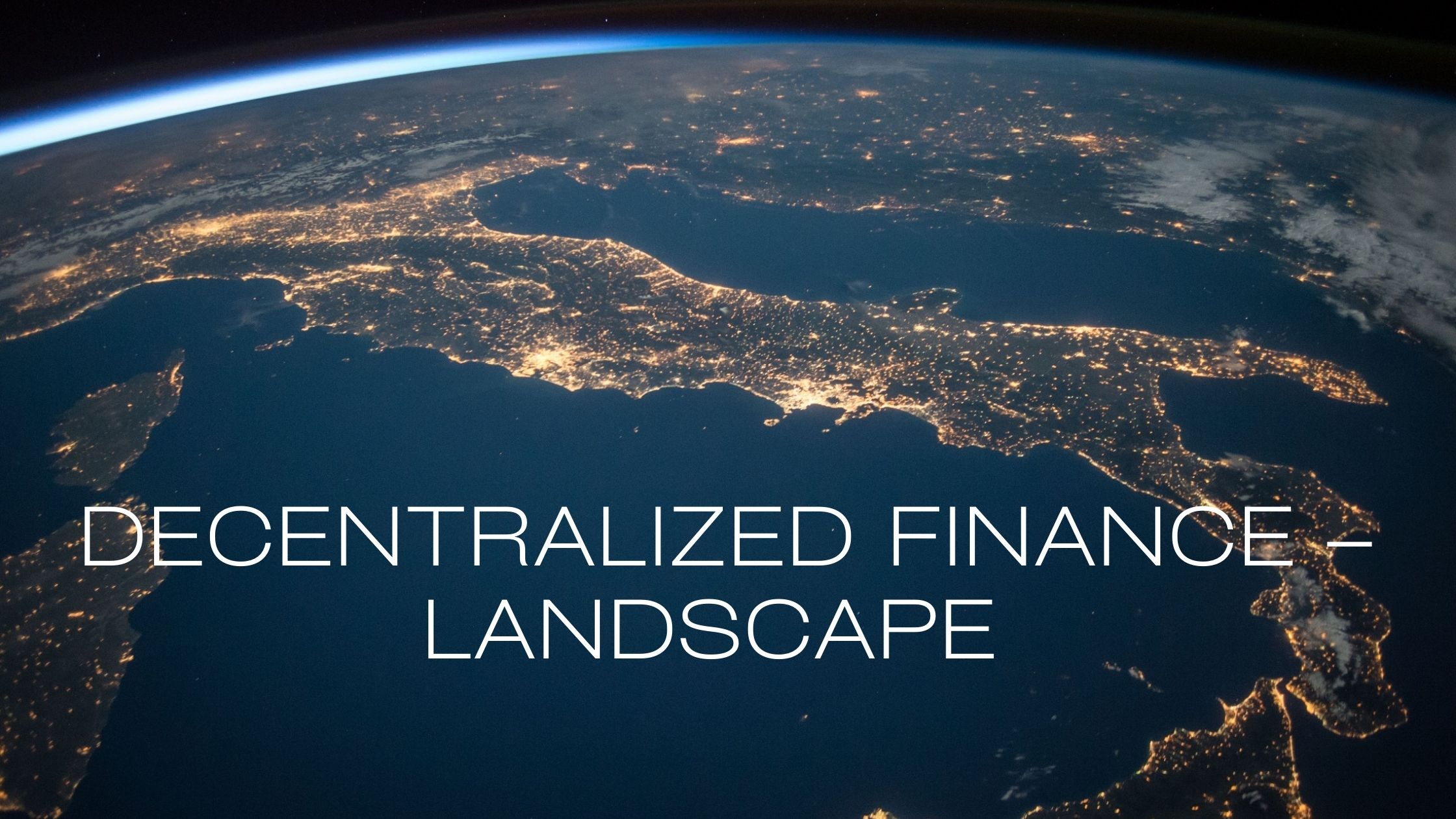Introduction
We are sailing through a new wave of financial innovation currently. Decentralized Finance (DeFi) is on its way to redefining the future of finance. It is most likely going to influence how banks work in the future. It has the potential to shift the entire financial system from a traditional banking system to blockchain technology.
The year 2020 saw an exponential growth of DeFi. In the second quarter of 2020, 97% of all activity on Ethereum was related to DeFi. The total value locked of DeFi protocol increased from $1 billion in February 2020 to $19 billion in January 2021. This shows around 20x growth in just 11 months.
Defi is an open financial system that uses blockchain technology to have limited or no involvement from financial institutions such as banks, insurances, or clearinghouses. It is operated by the power of smart contracts. It offers peer-to-peer alternatives for conventional financial services and institutions.
DeFi creates a system that can function on its own and is accessible to anyone who can use Ethereum. Ethereum blockchain introduced tools like smart contracts, digital assets, and dApps to the world. These tools became the building blocks for DeFi projects.
DeFi is completely open with no intervention from any centralized authorities. DeFi is helping in removing buffers, eliminating human error, improving transaction speed and cost, and bringing transparency.
Any financial system requires two components to work – one is the infrastructure to operate on and the other is the currency to operate with. In a conventional finance system – the bank and financial institution are the infrastructures while fiat money like the US dollar is the currency.
In the case of Decentralized Finance, Ethereum is the infrastructure, and Cryptocurrency like Ether that is compatible with Ethereum is the currency. This shows how blockchain and cryptocurrency are the core technologies that enable Decentralized Finance.
Benefits of Decentralized Finance
The benefits of DeFi go beyond money transfer and online payments. Money transfer without any intermediaries is just one aspect of DeFi. There are many more aspects of financial systems that DeFi looks to disrupt with innovation and technology. Some of the benefits of decentralized finance are:
- Decentralization – In a centralized financial system, financial institutions are controlling all transactions currently. As key intermediaries, they grow to dominate economic activities and end up accumulating disproportionate market power and monopoly.
In a decentralized financial system, peer-to-peer networks are used to facilitate financial transactions. Since there are no intermediaries involved, it reduces transaction costs and time. This allows every user to have equal power and control of the network. - Immutability – Blockchain has been able to achieve immutability through cryptography along with consensus algorithms. With Immutability, it is practically impossible to manipulate any record on the blockchain network.
This assures security for DeFi. Immutability ensures the integrity of DeFi solutions while undertaking any financial transaction. This also helps to avoid risks of any fraud since any changes on the network can be cross-referenced and recognized. - Borderless transactions – We have observed centralized financial systems are restricted by geography and their fiat currencies. On the other hand, this is not the case with DeFi.
DeFi relies on borderless cryptocurrencies. It is not bound by any specific geographic location as it has users from anywhere around the world. It also does not rely on any central bank or government thus making transactions across the globe as simple as sending an email. - Transparency – DeFi assures transparency in the financial system. DeFi records transactions on public ledgers which allow every user to have access to information about all activities on the blockchain network. DeFi generates distributed trust with public ledgers.
DeFi is often built with open-source code so that users can check for any risks or biases involved. Public ledgers and open-source code help keep track of all historical transactions that can help identify the root cause of any fraud or scam. - Interoperability – Decentralized Finance is built on public blockchains and open networks. This increases the interoperability across different services. Financial capital and value can flow across different services and borders with high interoperability.
Currently, the dominant platform for DeFi is Ethereum. But in the future interoperability through a single centralized platform is undesirable. Thus, the solution for this is to increase interoperability across different blockchains. In this way projects built on different blockchains can still enjoy full interoperability. - Use cases for DeFi – DeFi has brought about some radical changes in the past few years. Here are some of the DeFi use cases disrupting the financial system.
- Borrowing and lending – DeFi lending and borrowing is similar to traditional money markets but here the funds are not locked and can be withdrawn anytime. The integration of smart contracts ensures the elimination of intermediaries without making the process restrictive and complicated. It also works as verification from the lending and borrowing transaction process.
Compound is an Ethereum based lending platform allowing lenders to supply crypto-assets to lending pools. Borrowers can take out loans from these pools and lenders receive a share of interest paid by borrowers to the pool. The interest rate depends on how many deposits of the pool have been borrowed already. This makes interest rates variable and borrowers can pay back anytime. - Stable coins – “Traditional” cryptocurrencies like Bitcoin and Ether are notoriously volatile. Stable coins attempt to stabilize the values of cryptocurrencies by tying them to non-crypto currencies like the U.S. dollar or assets like gold.
A non-volatile crypto asset would play an important role in merchant payments, cross-border transfers, and storing wealth. It can act as your bank without the price volatility. - Decentralized exchanges – Decentralized exchanges (DEX) are one of the most impactful use cases of DeFi. DEXs are digital trading platforms that operate with no centralized authority. DEXs are not restricted to the trading of cryptocurrencies alone. They range anything from asset trading to derivatives trading.
As there is no involvement of any centralized authority it eliminates the risk of an asset or market manipulation. DEXs also offer lower exchange fees, faster settlement, and control over assets. - Tokenization – Asset tokenization is one of the important features of the DeFi ecosystem. Tokens can be created, issued, and managed for any kind of digital assets on the blockchain network. Ethereum offers robust smart contract capabilities that allow issuing of crypto tokens for any digital assets.
The different types of crypto tokens are dApps, real estate tokens, and Security tokens. Real estate tokens help achieve fractional ownership of physical properties. Security tokens help to achieve digital shares in specific applications. Tokenization helps exposure to both physical and digital assets. - Saving applications – With high inflation and flat interest rates in the current economy, people are looking for alternate savings solutions. People have started leveraging DeFi for the effective management of their savings.
Users are using lending protocols like Compound to earn interest on their assets. Various DeFi savings applications are allowing users to earn interest by plugging into different lending protocols. Yield farming has been able to help users earn better returns by moving their idle crypto assets across various lending protocols. - Risks involved in DeFi – A lot of DeFi landscape is still in the experimental stages which poses a lot of risks. The majority of the risks are associated with technologies they are related to.
- Scalability – DeFi projects have to face difficulties in scaling of host blockchain from various perspectives. DeFi transactions take a long time for confirmation. Transactions on Defi protocols during periods of congestion become highly expensive.
Ethereum at full capacity can process 13 transactions per second as compared to the centralized counterparts who can accommodate thousands of transactions per second. - Security threats and frauds – Blockchain technology is almost impossible to alter but aspects of DeFi may be at risk of being hacked. This can lead to loss of funds or theft.
Any untested financial innovations on DeFi can be vulnerable to fraud. It is important to encourage responsible innovation to be able to remove fraudulent actors. - Lack of Human intervention – DeFi relies completely on the rule of code rather than human judgments. This helps reduce subjectivity, uncertainty and agency costs. But this approach fails to leverage human tacit knowledge and judgment and may restrict the potential value of blockchain-based decentralized finance.
- Lacks accountability – DeFi lacks accountability. With no involvement of central entities, it is not clear who should be held responsible for any wrongdoing. DeFi projects do not take responsibility for any mistakes. DeFi takes away the intermediaries and thus users have to take responsibility for all their funds and assets.
Conclusion
DeFi can foster the application of blockchain technology to the financial sector. The increasing number of DeFi projects and use cases point towards a promising position of DeFi in the global economic ecosystem.
The emergence of decentralized finance that is leveraging blockchain technology to create an alternative financial system that is decentralized, borderless, innovative, and transparent holds a lot of promise. DeFi is still at its nascent stage of development. But innovators and entrepreneurs are experimenting with decentralized business models.
There are still numerous challenges to be addressed. There is still a lot of reluctance from people to adopt the new approaches and practices due to a lack of knowledge and information. But the current trends indicate that DeFi is here to stay and reshape the financial system.
Read our previous blogs here.


